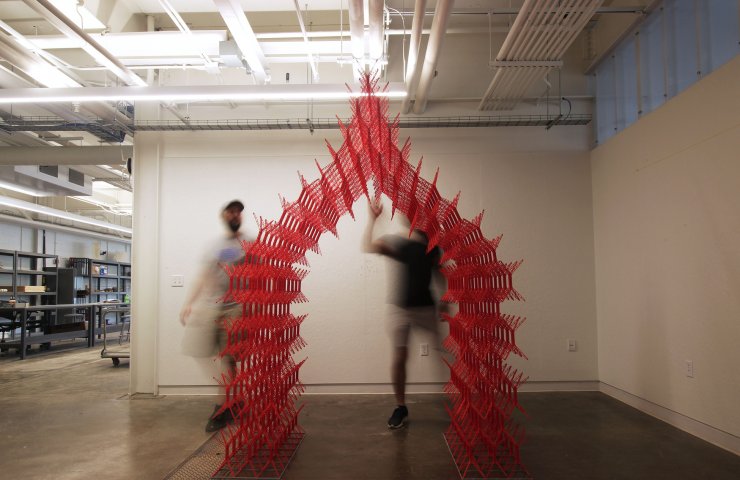Steel is the cornerstone of the construction industry. The introduction of steel girders made it easier to build more ambitious buildings and infrastructure, but the construction procedure itself has remained relatively unchanged over the past century.
The now award-winning innovation promises a new era of architecture and technology innovation.
In 1953, the German architect Konrad Wachsmann presented a structural component that could be industrially manufactured and used universally as the basis for any construction project. He wanted to standardize the basic building blocks of the building industry, such as LEGO pieces, that could fit into any project.
“The balance between elastic properties and structural strength of steel can be accurately calculated and controlled through numerical analysis.”
The idea of a universal structural component has captured the imagination of other architects and engineers over the years, but finding the right material or design has proven difficult.
Inspired by this challenge, Jin Young Song, an assistant professor at the University of Buffalo, began experimenting with interconnected steel components. He used digital models and 3D printed prototypes to create a module with four hooks that connected to each other.
Each module has four connecting feet and a center slot. The two modules slide together to create a double axis shape with eight connection points. Each of these points connects to the leg of the other module, making it easy to assemble simple, robust structures.
The Modular Snap-Lock System (SIMS) exhibits remarkable durability and is flexible enough to create infinite geometries. The main thing is that it is so simple that it can be assembled by one worker.
Song considered a number of different materials to create the modules, but ultimately the reliability of the steel made him ideal for his system.
“The balance between elastic properties and structural strength of steel can be accurately calculated and controlled through numerical analysis,” says Song.
Advances in steelmaking using multi-axis cutting with parametric tools, robotics and additive manufacturing are accelerating new applications of steel.
The simplicity of SIMS combined with the strength of steel can dramatically reduce the complexity of construction projects. Unlike conventional steel girders and post-construction methods, construction using SIMS does not require welding or bolting.
New designs can be quickly tested, and temporary designs can be assembled and, once completed, modules can be packaged again for use in a future project.
SIMS opens up a whole new world of possibilities for architects and engineers. It can potentially be used in the construction of partitions, structures and fences. But for Song, the most exciting app has probably not even been thought of yet.
“We are exploring a couple of interesting ideas such as using SIMS to create solar envelopes or rain screens. But really, because the system is based on ease of assembly and the idea of modular storage, the most interesting thing is how other people will use it. The assembly is so simple that a one-story steel pavilion can be built in the backyard, and that is a game changer. ”




